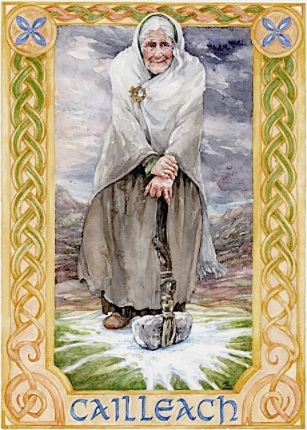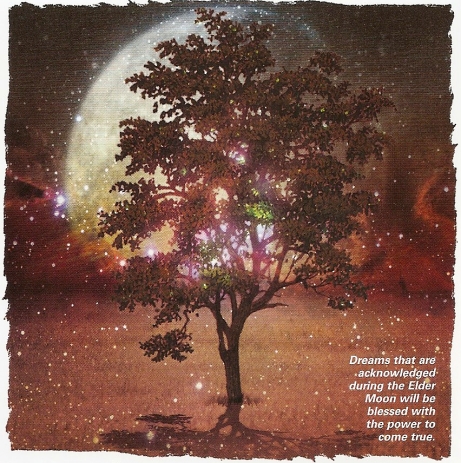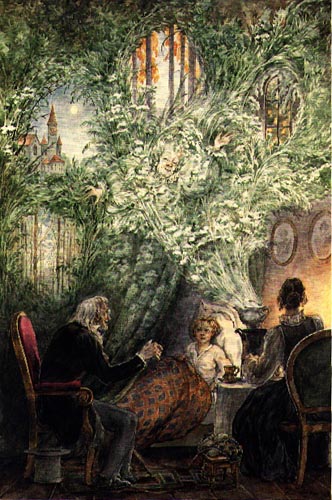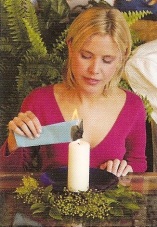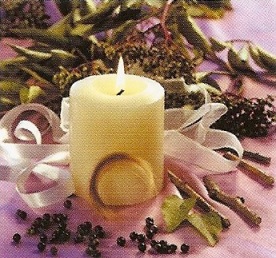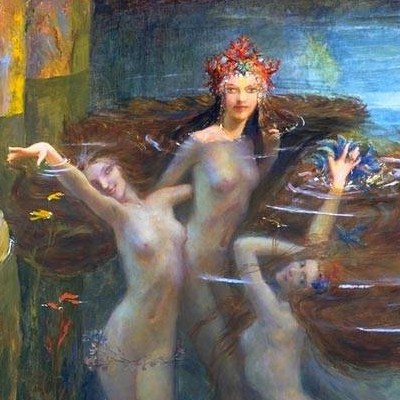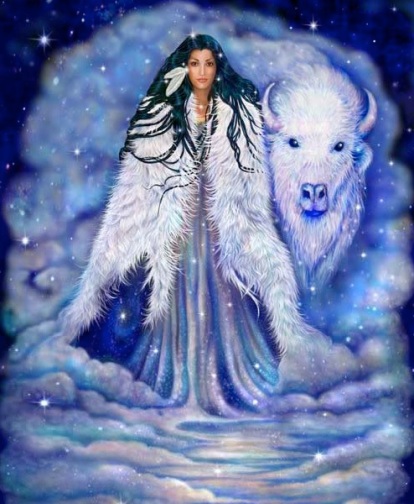“Cailleach Bheur’s themes are balance, cycles, rebirth, overcoming and winter. Her symbols are snow and blue items. In Scottish traditions, this is a blue faced crone Goddess who blusters with power throughout the winter months. She brings the snow and cold until the wheel of time turns toward spring on Beltane (May Day).
Just as darkness seems to be winning, the Crone Goddess stirs in the earth’s womb and inspires hope. She knows that the time for rebirth as a young woman will come in spring, when She will fertilize the earth. For now, however, the first step is renewing the sun, whose light will begin to get stronger.
Since this Goddess is one of cold honesty, wear something blue today to encourage personal reserve, control, and truth with yourself throughout the day.
In keeping with the themes of the Winter Solstice, you could try this mini-ritual:
In the morning, cover your altar or a table with a yellow cloth (maybe a napkin or placemat) to represent the sun. Place a blue candle in a central location on the table, along with a bowl of snow to represent Cailleach Bheur and winter. As the candle burns with the light of the sun, the wax shrinks and this Goddess’s snows melt, giving away once more to the power of warmth and light.
Keep the remnant was and re-melt it for any spells in which you need a cooler head. Pour the water from the snow outside to rejoin the Goddess.”
(Patricia Telesco, “365 Goddess: a daily guide to the magic and inspiration of the goddess”.)
Well, the Cailleach has appropriately blessed us with Her presence yesterday and overnight here in Upstate New York! Now, it’s beginning to look like a real North Country holiday season! It was quite inspiring while researching Her and I was able to find a TON of great info that I listed in the “Suggested Links” at the bottom for you to browse through at your own leisure.
Patricia Monaghan had this to write about Cailleach: “Her name, pronounced correctly, sounds like clearing her throat, but ‘coyluck’ is a near approximation. One of the world’s Great Goddesses, She went by many names: Cailleach Bheur or Carlin in Scotland; Cally Berry in northern Ireland; Cailleach ny Groamch on the Isle of Man; Black Annis in Britain; the Hag of Beare or Digne in Ireland. She was vastly ancient; the Irish Triads say: ‘The three great ages: the age of the yew tree, the age of the eagle, the age of the Hag of Beare.’ She could endlessly renew Her youth. All the men She loved – and they were countless – died of old age as She went on, returning to the prime of life, finding another pretty young one with whom to share youth.
She had one eye in the middle of a blue-black face, an eye of preternatural keenness. She had red teeth and matted hair ‘white as an apron covered with hoarfrost.’ Over it She wore a kerchief and over Her gray clothing, a faded plaid shawl. She owned a farm and hired workers for six months with the stipulation that none would be paid who could not outwork Her. Looking at the hunched old thing, many a man fell for the trick and paid with his life, dying of overwork while trying to keep the pace She set. So strong was She that She carried boulders in Her apron; the ones She dropped became mountain ranges.
She controlled the season and the weather; She was the cosmic Goddess of earth and sky, moon and sun. Beacuse She does not appear in the written myths of Ireland and Scotland, but only in ancient tales and place names, it is presumed that She was the Goddess of the pre-Celtic settlers of the islands off Europe. She was so powerful and beloved that even when newcomers imported their own divinities, the Cailleach was remembered” (p. 77 – 78).
Cailleach rules the dark half of the year, from Samhain to Beltane, while Her young and fresh counterpart, Brighid or Bride, is the queen of the summer months. At least one tradition views Bride and the Cailleach as being one and the same, with the Cailleach drinking from the Well of Youth at the beginning of each spring, whereby She is transformed into the youthful Bride. However most traditions in Scotland have them firmly pitted against each other as two differing personalities. She is sometimes portrayed riding on the back of a speeding wolf, bearing a hammer or a wand made of human flesh. [1] [2]
“Alternate names: Cailleach Bheur, Cailleach Uragaig, Cailleach Beinne Bric (‘Old Woman of the Speckled Mountain’), Cailleach Mor (‘Great Old Woman’) (Scotland); Cailleach Bheirre, Cailleach Bolus, Cailleach Corca Duibhe (Ireland); Caillagh ny Groamagh, Caillagh ny Gueshag (Isle of Man).” [3]
I would really like to share a neat short film with you that Grey Catsidhe had shared with our Druid group back in November entitled “An Cailleach Bheara“. Click on the picture below to be taken to the Irish Film Board (ifb) site.
I also really enjoy and respect the work that rainbowpagan2 on YouTube does, so I wanted to share this video as well.
Sources:
Firedragon, Tansy/Rachel Patterson. Tansyfiredragon.blogspot.com, “Cailleach and Bride“.
Monaghan, Patricia. The New Book of Goddesses and Heroines, “Cailleach”.
Took, Thalia. A-Muse-ing Grace Gallery, “The Cailleach, Celtic Crone Goddess of Winter“.
Wigington, Patti. Paganwiccan.about.com, “Cailleach, the Ruler of Winter“.
Suggested Links:
Firetree.net, “Cailleach“.
Forest, Danu. Danuforest.co.uk, “The Cailleach, the old woman of winter“.
McHardy, Stuart. Goddess Alive! Goddess Celebration and Research, “The Goddess in the Landscape of Scotland“.
Mysterious Britain & Ireland, “The Caillech Bheur“.
PaganPages.org, “Cailleach“.
Shaw, Judith. Feminismandreligion.com, “Cailleach, the Queen of Winter“.
Shee-Eire.com, “Cailleach Beara“.
Sparrow. Journey Around the Wheel of Life, “Cailleach“.
Tairis.co.uk, “Bride and the Cailleach“.
The Suppressed History Archives, “Crone“.
Wikipedia, “Cailleach“.
Woodfield, Stephanie. Darkgoddessmusings.blogspot.com, “Bride and Cailleach: Drinking from the Well of Youth“.
WolfWinds, Silver. Order of the White Moon, “Cailleach“.



